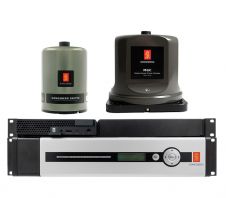Worldwide High-resolution Bathymetry
GOMaP, the Global Ocean Mapping Project, was a plan to methodically map all the world's oceans by multi-beam sonar. It may be stalled, but swath mapping of the oceans is certainly proceeding at a brisk pace, together with efforts to fill in unmapped and poorly mapped areas.
I have chosen this 'bully pulpit' to promote the goals of GOMaP. In 1999 US Navy civilian scientists calculated that an US$8-16 billion programme lasting twenty to thirty years could methodically map all the oceans deeper than 500m using multi-beam. This deep GOMaP would require 225 years of ship-time and another 600 ship/launch-years to measure the shallows from 25-500m. Unfortunately, GOMaP lacked the sex-appeal of placing humans on Mars or fulfilling other dreams.
However, a piecemeal, ad hoc form of GOMaP is underway. At regular intervals, new chunks of seafloor are mapped by multi-beam, either for national UNCLOS Article 76 submissions, studies of continental margins, ridges, and seamounts, or hydrocarbon exploration/exploitation etc. The number of ships equipped with shallow and deepwater multi-beam has steadily increased, together with the ability and willingness to keep them running. New software is allowing rapid analysis and quite sexy visualisation of the results on the internet, in journals, and even before the public.
Just recently a new trend appeared, with the state of Oregon declaring its intention of seeking US$5.6 million to completely map its 3nm wide, 3,260km2 territorial sea for purposes of tsunami run-up, fisheries habitat, hydrography, and all other needs. Last year CIESM/Ifremer published two morpho-bathymetric charts of the Mediterranean; some 45% of the Mediterranean has been swath-mapped over the past decade, in large part by the French.
My hope is that this swath coverage will eventually come into the public domain, gridded to GOMaP's ideal of at least 0.1' (<_185m). From GEBCO, the 2003 Centennial global 1' grid was vastly better than DBDB5 at 5', and new efforts are refining the synthetic bathymetry from satellite altimetry, as well as developing drifting echo-sounding buoys (viz. SSPARR). A new SRTM30-Plus global grid at 0.5' is available free on the Web, and academic multi-beam-survey polygon grids down to 100m are available via Lamont's GeoMapApp.
As a scientist I firmly believe in Robert K. Merton's comment that "In science, one's private property is established by giving its substance away". This differs from the businesslike character of national and commercial hydrography. Surely the benefits derived from the free availability of grids of 0.1', compiled from the multi-beam holdings of all hydrographic stakeholders, would not compromise the efforts of hydrographic offices and industry to make a living. Indeed, it should help to define targets that warrant much finer investigation, for instance by AUVs, as suggested by Don Hussong in this column in December 2004.
The oceans cover some 71% of Earth, with an average depth of over 4,000m. The approximately 90% that has not been properly surveyed seldom jeopardises safe navigation and SOLAS. However, these unmapped areas, with the features they conceal, can have great impact on our lives in myriad ways. Examples are the effect on ocean mixing of abyssal hills (the most ubiquitous landform on Earth), the state of the tectonic plates, and zones of past or incipient collapse and their tsunami-causing potential.

Value staying current with hydrography?
Stay on the map with our expertly curated newsletters.
We provide educational insights, industry updates, and inspiring stories from the world of hydrography to help you learn, grow, and navigate your field with confidence. Don't miss out - subscribe today and ensure you're always informed, educated, and inspired by the latest in hydrographic technology and research.
Choose your newsletter(s)
























